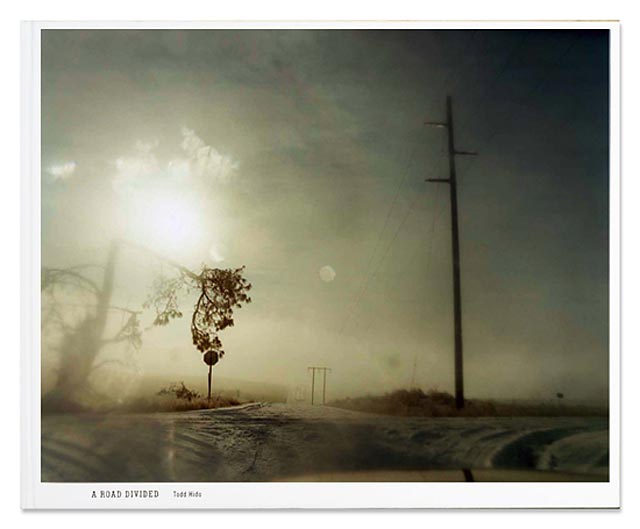See this egg. It is with this that all the schools of theology and all the temples of the earth are to be overturned.

{ Mark Delong }

{ Mark Delong }
So I wondered what benefits people get out of being married. Sure, there’s legal benefits – but I’m going to ignore those. Second, I do not ask ‘why people get married.’ I intend to focus the benefits and outcomes of being married.
Soons & Kalmijn (2009) obtained data (via survey and interview) from a total of 31, 465 individuals across 30 European countries, and looked at the difference between Married Couples and Unmarried Cohabitating Couples. The literature hint at a gap in well-being between the two groups, with some studies supporting greater well-being for Married Couples and some reporting no effect at all. (…)
Soons & Kalmijn (2009) found that in most countries married folk had higher levels of well-being than cohabitants, but found that, in a few select countries (such as Iceland) there was a reverse gap favoring cohabitants.

Decision making is an area of profound importance to a wide range of specialities - for psychologists, economists, lawyers, clinicians, managers, and of course philosophers. Only relatively recently, though, have we begun to really understand how decision making processes are implemented in the brain, and how they might interact with our emotions.
‘Emotion and Reason’ [by Alain Berthoz] presents a groundbreaking new approach to understanding decision making processes and their neural bases. The book presents a sweeping survey of the science of decision making. It examines the brain mechanisms involved in making decisions, and controversially proposes that many of our perceptual actions are essentially decision making processes. Whether looking, listening, hearing, or moving, we choose to attend to certain stimuli, at the expense of others.
Berthoz also considers how many decision making processes involve an internal dialogue with our other self, and how this dialogue with our “doppelganger” might be represented in the brain.
{ Oxford University Press | Continue reading | video: Conférence du 15 décembre 2008. Alain Berthoz: Emotion, raison et décision | watch/download }
photo { Christophe Kutner }

Francis Wolle, active in the early 1850s, is considered the first inventor of the modern paper bag. Based in Pennsylvania, he cofounded the Union Paper Bag Machine Company in 1869, as well as becoming ordained as a deacon and following passions in entomology and botany. Union was supported financially by wealthy manufacturers, who thereby secured rights to patents secured by the company and divvied up the country into market segments to avoid direct competition. One of these characters was industrialist George West of Saratoga County, New York, also known as the “Paper Bag King.” (…)
The speed and scale of paper-bag production facilitated by Stilwell’s design was revolutionary for the industry. In The Growth of a Century (1894), for example, John A. Haddock describes the Paper Mill and Bag Factory of the Taggart Brothers’ Company in Watertown, NY: “In the bag-manufacturing room they have one machine that makes a bag with satchel-bottom, direct from the roll, at the rate of 3,600 finished bags per hour, completing with ease 25,000 fifty-pound flour sacks in ten hours.
photo { Beni Bischof }

Black is the color of objects that do not emit or reflect light in any part of the visible spectrum; they absorb all such frequencies of light. Although black is sometimes described as an “achromatic” color, in practice it can be considered a color.
Black can be defined as the visual impression experienced when no visible light reaches the eye.
Pigments that absorb light rather than reflect it back to the eye “look black.” A black pigment can, however, result from a combination of several pigments that collectively absorb all colors. If appropriate proportions of three primary pigments are mixed, the result reflects so little light as to be called “black.”
This provides two superficially opposite but actually complementary descriptions of black. Black is the lack of all colors of light, or an exhaustive combination of multiple colors of pigment.
photo { Ron Jude }

{ 1. Laura Encursiva | 2. April Renae }
{ Skream, The Epic Last Song, 2010 }
{ The history of the “Amen Break,” a six-second drum sample from 1969 }

We’d like to believe that most of what we know is accurate and that if presented with facts to prove we’re wrong, we would sheepishly accept the truth and change our views accordingly.
A new body of research out of the University of Michigan suggests that’s not what happens, that we base our opinions on beliefs and when presented with contradictory facts, we adhere to our original belief even more strongly.
The phenomenon is called backfire.
photo { Sandy Carson }

I believe that all those signs from your past and all those feelings and memories certainly come together, often subconsciously, and form some kind of a fragmented narrative. Often you’re telling your own story but you may not even know it. (…)
Larry Sultan truly was one of the most remarkable people that I have ever known. I was so fortunate to have been able to study under him and also become his friend and colleague. He was so incredibly articulate about talking about pictures and I learned so much from him about what photography can do and how it can mean something that extends way beyond what you are picturing in your images.
{ Interview with Todd Hido | Continue reading | Photo: Todd Hido }

Let’s start with the invention of air conditioning. This is only one of approximately a zillion topics addressed by the science writer Steven Johnson during the course of lunch at an Italian restaurant in downtown Manhattan; some of the others include Darwinian evolution, the creation of YouTube, the curiously perfect population density of the Park Slope neighbourhood of Brooklyn, the French Revolution, the London cholera epidemic of 1854, the first computer, The Wire, and why 9/11 wasn’t prevented.
But air conditioning provides a useful way to introduce Johnson’s current overarching obsession – the mysterious question of where good ideas come from – because it encapsulates how we generally like to think about inventors and inventions. One night in 1902, an ambitious young American engineer named Willis Carrier was waiting for a train, watching fog roll in across the platform, when he had a sudden flash of insight: he could exploit the principle of fog to cool buildings. He patented the idea, protected it fiercely, put his new invention into production, and made a fortune. In 2007, the still-surviving Carrier Corporation generated sales worth $15bn.
For Johnson, though, what’s really interesting about that story is how unusual it is: although the eureka moment is such a cliche, big new ideas almost never get born like that. “It’s weird, but innovation is one of those cases where the defining image, all the rhetoric and all the assumptions about how it happens, turn out to be completely backward. It’s very, very rare to find cases where somebody on their own, working alone, in a moment of sudden clarity has a great breakthrough that changes the world. And yet there seems to be this bizarre desire to tell the story that way.”
photo { Chris Brennan }

Undoubtedly you have heard that dogs can sense earthquakes before the tremors occur. While anecdotes are common, experimental evidence supporting these claims remains elusive. The USGS in the 1970′s even examined the ability of animals for prediction “but nothing concrete came out of these experiments.”
Cueing on changes in the weather is frequent among the animal kindgom. Indeed, the daily, seasonal, and annual cycles of animals are triggered to changes in temperature, day length, precipitation, among a host of other environmental cues. But predicting the weather changes including large catastrophic weather events such as cyclones and hurricanes may be of another ilk.
Being able sense an oncoming major hurricane or cyclone would prove an invaluable trait for animal. Storm surges can both decimate and rearrange marine habitats especially in coral reefs. (…)
In 2009, the typhoon Morakot passed over the Philippines, Taiwan and eventually mainland China. (…) Researchers counted sea snakes in the coastal area before (July), directly before (August 5-6, labelled during below), and after the typhoon (August 12-17th). (…)
Data suggests that snakes senses the approach of the typhoon even before it made landfall.
photo { Stuart Robertson Reynolds }
If the world is going to hell, why are humans doing so well?
For decades, apocalyptic environmentalists (and others) have warned of humanity’s imminent doom, largely as a result of our unsustainable use of and impact upon the natural systems of the planet. After all, the most recent comprehensive assessment of so-called ecosystem services—benefits provided for free by the natural world, such as clean water and air—found that 60 percent of them are declining.
Yet, at the exact same time, humanity has never been better. Our numbers continue to swell, life expectancy is on the rise, child mortality is declining, and the rising tide of economic growth is lifting most boats.
So which is it? Are these the best of times or the worst of times? Or both? And how imminent is our doom really? In the September issue of BioScience, a group of scientists attempts to reconcile the conflict and answer the question: “How is it that human well-being continues to improve as ecosystem services decline?”

A team of engineers, physicists and mathematicians conducted a three and a half year study to find out exactly how cats manage to move the milk from saucer to mouth, while keeping their chins dry in the process.
And far from simply slurping at the bowl, researchers at MIT, Virginia Tech and Princeton University say the technique exhibits “a perfect balance between two physical forces.”
It was known from a 1941 study that when they lap milk, cats extend their tongues in a backwards ‘J’ – meaning the top of their tongue touches the surface first.
But recent high speed footage has shown that the top surface is the only part of the tongue to touch the liquid – meaning that unlike in dogs, where the tongue is fully immersed and used as a ladle, a more refined technique is at work.
The tip of the cat’s tongue scarcely brushes the liquid’s surface before it is rapidly drawn back. This forms a column of milk between the tongue and the surface, which the cat captures by closing its mouth.
This column is created by a balance between gravity pulling the liquid back to the bowl, and inertia – the tendency of a substance to move in a given direction until another force intervenes.
Cats instinctively know how to strike this balance in order to time the lapping and to capture the liquid in their mouths, according to journal Science.
photo { Todd Fisher }

This is the story of a Procedural.
So I’m at a meeting with a producer the other day and he’s pitching me a tv idea. As way of emphasizing why I need him and his idea, he brings forth a piece of paper. On it, my credits. He doesn’t actually hand it over to me but he says this:
PRODUCER: I’ve been looking over your credits, pretty impressive.
ME: Thanks, we try.
PRODUCER: Seems to me you’re just missing one thing from these credits. And I’m gonna tell you what it is.
ME: Please do.
At which point he turns the piece of paper towards me and I see he’s written in bold black marker near the top, pointing to the list: BIG FUCKING HIT TV SHOW.
ME: Well, yes, I am missing that. Very true. I think about that a lot.
PRODUCER: That’s all right. Because I’m here to change all that.
{ I find your lack of faith disturbing | Continue reading | via cardhouse }
photo { Glenn Glasser }
Einstein presented what is referred to as the “block universe” – the notion that all times exist equally. So, what you see just depends on what you set t to in any given equation. “The distinction between past, present and future is only an illusion, however persistent,” the genius of relativity mused. He was so clear about the illusory nature of time that the thought even provided him with comfort in the face of death.
But the block universe, and the notion of God’s timelessness, have been challenged by scientists who also work on the relationship between science and religion. I’m thinking here of two physicists who are also well known as theologians, John Polkinghorne and Ian Barbour. Their questioning of the classical idea of God’s timeless nature presents an enormous challenge to received ideas about God. Interestingly, it’s a challenge that stems from both scientific and theological concerns. (…)
Scientifically, time is an oddity. Relativity theory treats it as one dimension of reality. Time is tantamount to the movement of mass in spacetime. So, time reversal, or retrocausality, has been proposed as a way to interpret antimatter — a positron being an electron that’s traveling backwards in time. Also, at a theoretical level, the equations that govern electromagnetic radiation don’t distinguish between time going forwards or backwards. And yet, in the macro-world of the everyday, we clearly can’t move temporally backwards, but only forwards. So how can this existential difference be reconciled?

Sweating sickness, also known as the “English sweate” (Latin: sudor anglicus), was a mysterious and highly virulent disease that struck England, and later continental Europe, in a series of epidemics beginning in 1485. The last outbreak occurred in 1551, after which the disease apparently vanished. The onset of symptoms was dramatic and sudden, with death often occurring within hours. Its cause remains unknown. One suspect is a hantavirus. (…)
The symptoms and signs as described by Caius and others were as follows: The disease began very suddenly with a sense of apprehension, followed by cold shivers (sometimes very violent), giddiness, headache and severe pains in the neck, shoulders and limbs, with great exhaustion. After the cold stage, which might last from half an hour to three hours, the hot and sweating stage followed. The characteristic sweat broke out suddenly without any obvious cause. Accompanying the sweat, or after that was poured out, was a sense of heat, headache, delirium, rapid pulse, and intense thirst. Palpitation and pain in the heart were frequent symptoms. No skin eruptions were noted by observers including Caius. In the final stages, there was either general exhaustion and collapse, or an irresistible urge to sleep, which Caius thought to be fatal if the patient was permitted to give way to it. One attack did not offer immunity, and some people suffered several bouts before succumbing.
The malady was never seen again in England after 1578 although a similar illness, known as the Picardy sweat, occurred in France between 1718 and 1861, but was less likely to be fatal and was accompanied by a rash, which was not a feature of the earlier outbreaks.
The cause is the most mysterious aspect of the disease. Commentators then and now put much blame on the general dirt and sewage of the time, which may have harboured the source of infection. (…)
Relapsing fever has been proposed as a possible cause. This disease, which is spread by ticks and lice, occurs most often during the summer months, as did the original sweating sickness. However, relapsing fever is marked by a prominent black scab at the site of the tick bite and a subsequent skin rash, whereas contemporaries did not note these relatively obvious signs, so the identification is far from certain.
Chronic fatigue syndrome has been suggested by Chaudhuria and Behan based on a 1934 article of epidemic myalgia outbreaks that share clinical similarities with Bornholm disease.
More recently, a hantavirus has been proposed and appears to be an interesting candidate for consideration in the etiology of this illness.[4] However, certain clinical features of hantavirus outbreaks do not seem to match the progression of the sweating sickness; specifically, while hantavirus has only rarely been observed to be transmitted from one human to another, this is believed to be a significant mode of transmission of the sweating sickness.
photo { Helen Korpak }
At about 3am on 8 October last year, an asteroid the size of a small house smashed into the Earth’s atmosphere over an isolated part of Indonesia. The asteroid disintegrated in the atmosphere causing a 50 kiloton explosion, about four times the size of the atomic bomb used to destroy Hiroshima. The blast was picked up by several infrasound stations used by the Comprehensive Nuclear-Test-Ban Treaty Organization to monitor nuclear tests.
No one was injured in the blast but the incident highlights the threat that planet faces from near Earth asteroids. Astronomers expect a strike like this once every 2-12 years. And the US congress has given NASA the task of sweeping the skies to identify anything heading our way. So far NASA has looked for objects of a kilometre or more in size and determined that none of these is on track to hit Earth in the foreseeable future.
But what of smaller objects? Various estimates show that an impact with an asteroid just 50 metres across would cause some 30,000 deaths (compared with 50 million deaths from an impact with a 1 kilometre-sized object).
This raises two important questions. The first is how best can astronomers monitor the skies for these smaller objects. The second is what to do should we find something heading our way.

Does the Fed print money? If so, how?
It’s true that the Fed is not literally printing the $20 bills that end up in your wallet. As a commenter on your own blog has noted, that’s the job of the Bureau of Printing and Engraving. But money includes both currency in circulation and the reserves that commercial banks keep on deposit at the Fed. By that definition, the Fed is indeed printing it.
Here’s how QE works. The Fed buys a $100 bond from Bank of America. The bond gets added to the Fed’s assets. Bank of America has an account at the Fed. The Fed, with a keystroke, puts a $100 into B of A’s account. Where did the money come from? Thin air. Bank of America can visit its friendly neighborhood Fed branch and withdraw that $100 in the form of bills and coins. So for practical purposes the distinction between currency and reserves is meaningless; the monetary base includes both.
photo { Steven Ahlgren }
Where does desert sand come from?
Dr Pieter Vermeesch and colleagues had the same question about the sand in the Namib Sand Sea – one of the world’s oldest and largest sand deserts. We know little about where sand in the Namib, or other large deserts, comes from. How long the sand has been blowing around the 34,000 km square desert was also a mystery, although we know southwest Africa has been dry for at least five million years.
The team tracked the sand’s origins back to sediments in South Africa’s Orange River using natural uranium 238 clocks. Uranium 238 – the most common type of natural uranium – turns into lead over billions of years. Older sand contains more lead. In an area containing sands of varying ages, zircon sand grains can be linked to their source by the amount of uranium and lead they contain.
The next question was how long ago the sand left the Orange River bed and blew north into the Namib Sand Sea. The team again used natural clocks to retrace the sand’s path along the Namibian coastline. This time, they looked at radioactive beryllium (Be), aluminium (Al) and neon (Ne) in sands from quartz-containing rocks.
When sand is near the Earth’s surface, it’s bombarded by cosmic radiation – energetic particles from outer space. These particles collide with atoms of Be, Al and other elements in sand grains, causing them to become unstable. When the grains become buried in dunes, they stop being bombarded. The amount of unstable cosmogenic Be and Al declines over time – indicating how long ago the grains were buried.